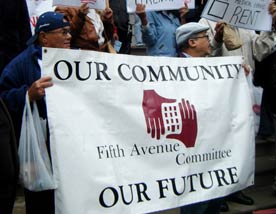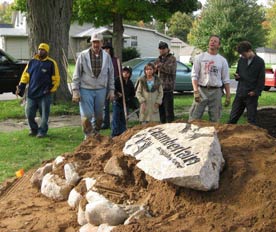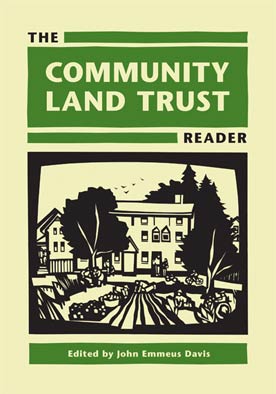Contemporary Models of Community Practice
Not all community groups have lost sight of the importance of power and conflict. Some understand the dynamics of conflict and use that understanding to implement different practices to advance social change. One of the central problems with much of the work that has been written on community is its tendency to fall into dualistic thinking: organizing or development; consensus or conflict; community or labor; local or larger scale. This limits the potential scope and range of community-based efforts for social change.
Some organizations do work in several different arenas and in a variety of ways. They organize and do development. They are collaborative and consensual, but unafraid of conflict. And they act at a set of different scales, ranging from the community to the city, the state or province, and the globe. They do so because they understand that the nature of community is one of complex relationships that manifest themselves in different kinds of interactions, and also transcend the local.
The Fifth Avenue Committee (FAC) is one such organization. FAC emerged in the 1970s in Lower Park Slope in Brooklyn, New York. At the time, Lower Park Slope, unlike the Park Slope section of Brooklyn — its wealthy neighbor to the east — faced many of the same problems of systematic disinvestment and decline that were evident in so many U.S. urban neighborhoods. The presence of the affluent adjacent neighborhood, however, meant that from its founding, FAC understood that the organization’s work could never be limited to just improving the community. It understood the threat of displacement from gentrification and the contradictions that emerge from improving things in an area where improvement is also a threat.
FAC’s ability to simultaneously do organizing and development comes from acknowledging this contradiction. The organization’s original mission statement emphasized maintaining social and economic diversity in the neighborhood — although that language was removed from its mission statement in the late 1990s and replaced with a simpler (and in many ways more radical) call for social and economic justice in the neighborhood. Over the last 30 years, FAC has become one of the largest and most dynamic community organizations in New York City. Its work reads like a motley mix of services, housing construction, retail development, and organizing. Most important for us here, however, is the persistence of both development and organizing in the organization’s work.
ACORN, despite the well-orchestrated right-wing political campaign and internal strife that led to its ultimate demise, was well known and became prominent for reasons that actually had very little to do with its contribution to community organizing and the lessons that it provides. One of the most important aspects of its work has been its ability to operate at both local and national levels. This allowed ACORN to transcend some of the inherent limits of community-based activism. Until the recent assault on the organization, ACORN, unlike most other community organizations, meshed dues-paying members in local chapters within a national network with national leadership and professional staff. Its dramatic growth and public visibility between 2002 and 2008 around economic and political justice issues such as living wages, predatory financial practices, labor organizing, voter registration and electoral campaigns, and the reconstruction after Hurricane Katrina in New Orleans derived from its national organization. They understood and operationalized the concept that it takes more than community-based initiatives to effect change, but that national organizations without community roots and local members lack real power and legitimacy.
ACORN’s perspective and practice transcended boundaries that limit other community efforts. Its focus was always on building the organization, building greater power, and mobilizing more people and funding. Its work was not constricted by dualisms such as community- or national-based organizing, service delivery or social action, grassroots or electoral activism, etc. Even with obvious limits resulting from the tension between running both local and national organizations, ACORN’s local-national organizational structure addressed the parochialism that undermines most contemporary, as well as historical, community organizations. For example, in its national campaign against predatory tax preparation by H&R Block, ACORN was able in the first few months of 2004 to hold simultaneous protests at local H&R Block offices in more than 50 cities, totaling more than 400 pickets, protests, and demonstrations overall and quickly and successfully forcing the Fortune 500 company to negotiate. For our purposes what is so valuable in the ACORN example is the demonstration of a contemporary community organizing effort that blends democratic localism with a national organization structure that began to build the clout and power necessary to affect globalized corporations and income redistribution, which are major reasons why the organization has been so heavily attacked.





Comments